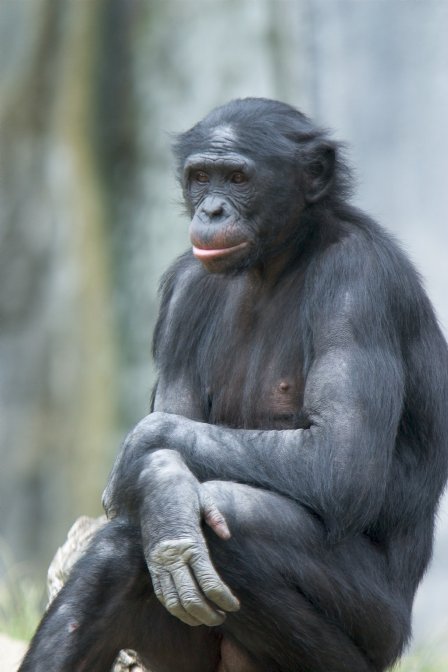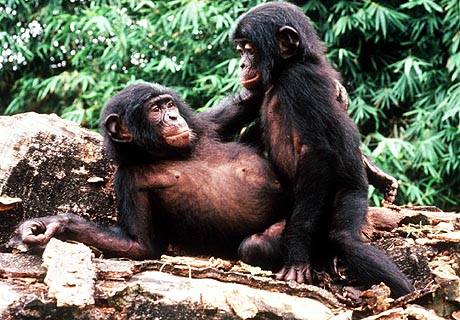Bonobo
We learned from the science of evolution that the first man was APE. Now
let us take a careful study of this particular specie. BONOBO
The
Bonobo is endangered and is found in the wild only in the Democratic
Republic of the Congo. Along with the Common Chimpanzee, the Bonobo is
the closest extant relative to humans. Since the two species are not
proficient swimmers, it is possible that the formation of the Congo
River 1.5–2 million years ago led to the speciation of the Bonobo.

They live south of the river, and thereby were separated from the
ancestors of the Common Chimpanzee, which live north of the river.
German
anatomist Ernst Schwarz is credited with having discovered the Bonobo
in 1928, based on his analysis of a skull in the Tervuren museum in
Belgium that previously had been thought to have belonged to a juvenile
chimpanzee. Schwarz published his findings in 1929. In 1933, American
anatomist Harold Coolidge offered a more detailed description of the
Bonobo, and elevated it to species status.
Common name Bonobo and
the scientific name for the Bonobo is Pan paniscus.
Social behaviour:

Females are considered to have a higher social status in their
matriarchal culture. Strong female bonding allows groups of female
Bonobos to dominate the community. Aggressive encounters between males
and females are rare, and males are tolerant of infants and juveniles.
Bonobo
tends to be variable since the groups exhibit a fission-fusion pattern.
A
community of approximately one hundred will split into small groups
during the day while looking for food, and then come back together to
sleep. They sleep in trees in nests that they construct.
Closeness
to humans:
Bonobos are capable of passing the mirror-recognition
test for self-awareness. They communicate primarily through vocal
means, although the meanings of their vocalizations are not currently
known.
However, most humans do understand their facial
expressions and some of their natural hand gestures, such as their
invitation to play. One study analyzed and recorded sounds made by human
babies and Bonobos when they were tickled. It found although the
Bonobo's laugh was a higher frequency, the laugh followed a similar
spectrographic pattern to human babies.
- BBC News | In pictures: Bonobos under threat, Sanctuary
BBC News - Images of the Bonobo - Pan paniscus - ARKive
Images of the Bonobo (Pan paniscus) on ARKive - Bonobo - Wikipedia, the free encyclopedia



